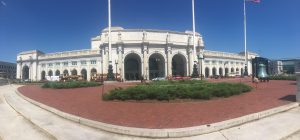By Amanda Cary
When I shared with friends and family that I would be spending my fall semester in Washington, D.C., most thought I was making a good choice in my development as a young professional. However, I noticed a recurring theme: people seemed to have something cynical to say about politics, media, and the future of the United States.
Usually, these comments were just jokes. “Are you going to set straight the politicians in Washington?” But as I dig a little deeper into it, it seems nearly everyone I know holds the notion that government workers are lazy, politicians are greedy, the media is the problem – and America is doomed.
I’ve got to admit, it’s a little difficult not to think that way right now.
To make matters worse, the presidential election is pretty much a disaster. I mean, come on – there are over 319 million people in the United States, and these were the only two we could choose to run for president? Not only does present-day America seem pretty bleak, but the future ain’t looking too bright either.
In times like these, it is easy to point fingers. And, for many, the most logical place to point is right at Washington, D.C. To some extent, that makes the most sense. Maybe if we had bette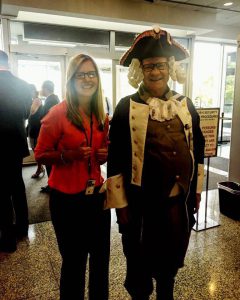 r laws, better politicians, better government workers, better coverage, things would be … better.
r laws, better politicians, better government workers, better coverage, things would be … better.
But this is not the full story, and I’ve seen it firsthand.
In the two months that I have been in Washington, I have met with individuals who should be “lazy government workers” or “biased journalists” – except they are hardly ever any of these things.
At my internship at the U.S. Department of Education, I have been amazed by how exceptionally talented and passionate the employees are. From the interns and temporary employees to the Secretary of Education himself, each individual is so dedicated to providing an equal and quality education to every student in the United States.
One employee told me that she consistently works past normal business hours, on weekends, and on holidays. Her reasoning? “Every hour that I spend away from my job, another student gets left behind in their education.” If you ask me, THAT is the epitome of a hard working, passionate government worker.
These experiences are not limited to the walls of the Department of Education. From speaking to journalists who cover politics, to meeting with some of the politicians themselves, I have been taken back by how humble and genuine these people really are. 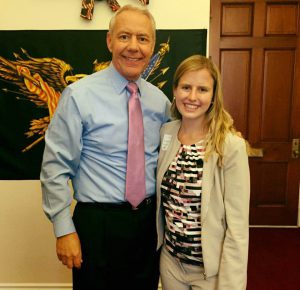
It says a lot for a congressman to take time out of his busy schedule to meet with me, a 20-year-old intern who is just trying to figure what to do with her life – but it happened. My state representative, Ken Buck, sat and talked with me like a normal human being, offering advice on how to make the most of my college experience. It didn’t matter if I donated to his campaign or if I agreed with him politically. He met with me because I am his constituent and he cares about what I have to say – that’s leadership.
There’s something special when a well-known CNN journalist, Dana Bash, can Facetime a college class 20 minutes before her live shot to talk about the business of journalism, where it is going, and what her own job is like – that’s kindness.
We should expect the best out of our government and the people that report on it; they do. It is so important to hold them to a high standard and to criticize when needed in order to make improvements. But, we should also value, appreciate, and admire the people who take the brunt of all of our complaints. We should understand that it takes a special type of person to go into public service; these people are willing to sacrifice sleep, pay, travel – simply because they want to make American lives better.
Of course, there are corrupt politicians, there are inefficient government workers, and there are biased journalists. However, if yo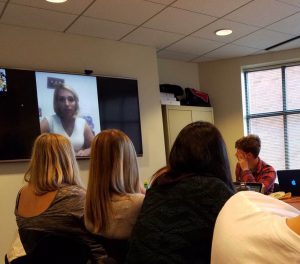 u never leave your living room to discover for yourself what these professions are really like, how will you ever know the truth? You cannot fully judge the media and the government until you meet with the individuals who are behind the screens, behind the laws, behind the regulations.
u never leave your living room to discover for yourself what these professions are really like, how will you ever know the truth? You cannot fully judge the media and the government until you meet with the individuals who are behind the screens, behind the laws, behind the regulations.
Beyond that, we take for granted living in a country that allows us to participate in our democracy and enables us to have access to information. As crazy as politics can be, we are fortunate to be Americans – to have rights, to have a voice, and to know there are people in Washington, D.C. advocating for us.
I urge you to get involved with your political system before making any judgments. I hope that you have the chance to meet a journalist and understand what they do and what they care about. You may just discover real, genuine human beings who are truly the lifeblood of American democracy.
Originally posted November 8, 2016
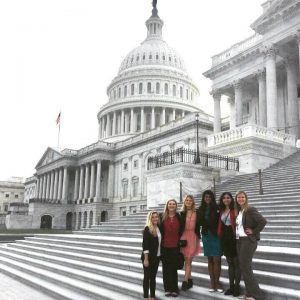 I do not get outside of my comfort zone. I have always tried to push myself, and I have, but all inside of my bubble. When I first heard about the Washington Media Institute, I knew I had to apply. It had the perfect mix of politics and journalism, and it wasn’t in another country like other programs.
I do not get outside of my comfort zone. I have always tried to push myself, and I have, but all inside of my bubble. When I first heard about the Washington Media Institute, I knew I had to apply. It had the perfect mix of politics and journalism, and it wasn’t in another country like other programs.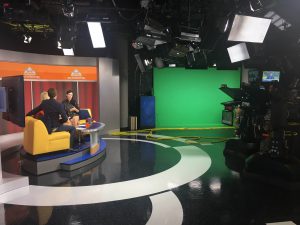

 r laws, better politicians, better government workers, better coverage, things would be … better.
r laws, better politicians, better government workers, better coverage, things would be … better.
 u never leave your living room to discover for yourself what these professions are really like, how will you ever know the truth? You cannot fully judge the media and the government until you meet with the individuals who are behind the screens, behind the laws, behind the regulations.
u never leave your living room to discover for yourself what these professions are really like, how will you ever know the truth? You cannot fully judge the media and the government until you meet with the individuals who are behind the screens, behind the laws, behind the regulations.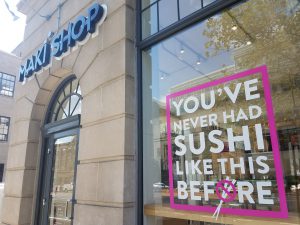 My first week here I don’t think I cooked a single meal in my apartment. The second morning I made a brief stop at a nearby grocery store to pick up a handful of essentials (for posterity’s sake if anything else) and some of them still remain untouched in the cabinet, waiting to find purpose. Whether it was Portuguese chicken, pad thai, sushi, Lebanese, or crepes, I never found myself want for options. Worse yet, all of these options were within 15 minutes walking distance of my apartment. At first, I was in heaven.
My first week here I don’t think I cooked a single meal in my apartment. The second morning I made a brief stop at a nearby grocery store to pick up a handful of essentials (for posterity’s sake if anything else) and some of them still remain untouched in the cabinet, waiting to find purpose. Whether it was Portuguese chicken, pad thai, sushi, Lebanese, or crepes, I never found myself want for options. Worse yet, all of these options were within 15 minutes walking distance of my apartment. At first, I was in heaven.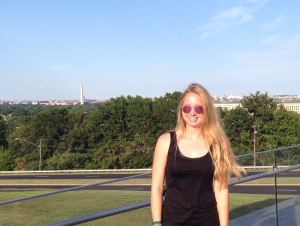 By Christy Flom
By Christy Flom